Cast iron chimineas bring a rustic charm to your backyard or patio while providing a warm, inviting atmosphere. They’re super durable, so you can count on them to withstand the elements and last for years. With easy setup and a cozy fire, these beauties are perfect for gatherings or just a quiet night under the stars.
Cast Iron Chimineas
Enhance your outdoor gatherings with timeless elegance and warmth from our durable cast iron chimineas
Product List
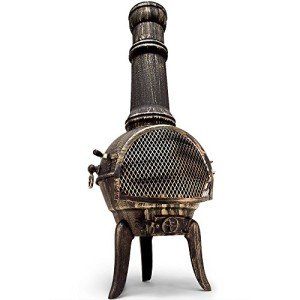
GARDEBRUK® Cast Iron Chiminea
Gardebruk
Product Review Score
4.53 out of 5 stars
21 reviews£129.95 £93.45
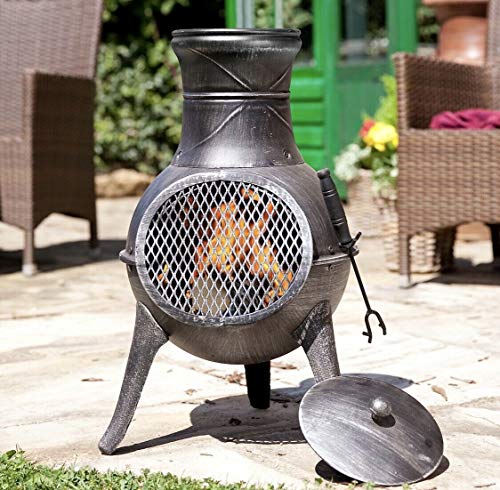
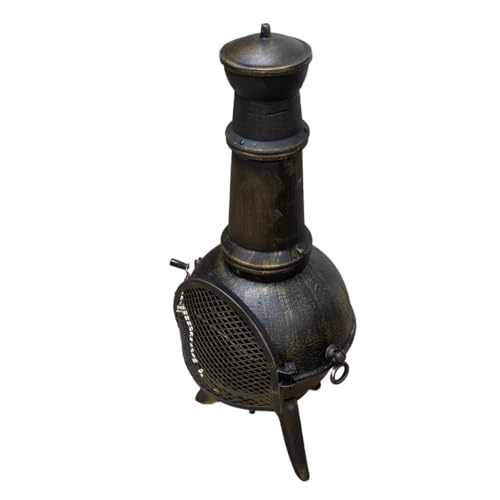
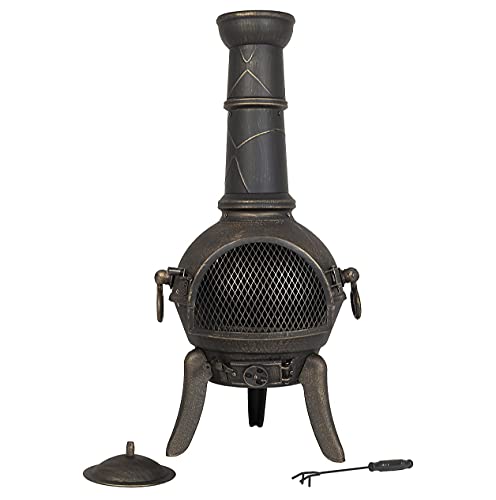
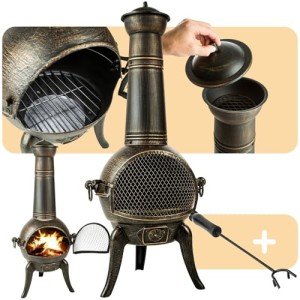


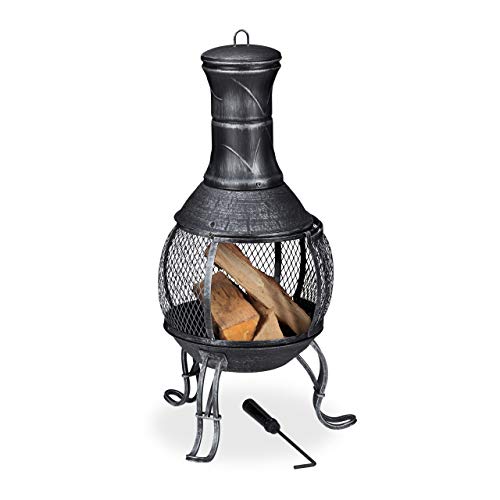
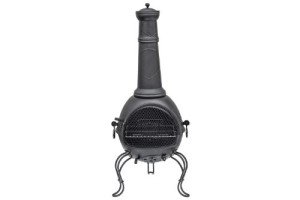

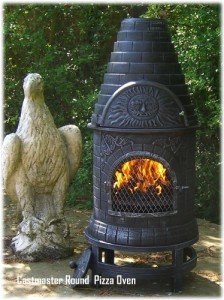
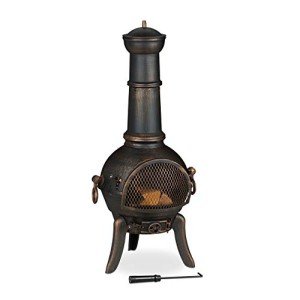
Relaxdays Outdoor Cast-Iron Chimenea
Relaxdays
Product Review Score
4.5 out of 5 stars
188 reviews£143.90
Cast iron chimineas have become increasingly popular as outdoor heating and decorative features in gardens, patios, and backyards. They not only offer warmth on chilly evenings but also serve as a focal point for social gatherings, creating a cozy ambiance. In this informative blog post, we'll explore the benefits, types, maintenance needs, and safety considerations related to cast iron chimineas. Toward the end, we’ll also answer some frequently asked questions to ensure you have a comprehensive understanding of these charming outdoor features.
What is a Cast Iron Chiminea?
A chiminea is a freestanding front-loading fireplace or oven with a bulbous body and a chimney. Traditional chimineas originate from Mexico, where they were used for cooking and heating. In more recent times, cast iron chimineas have gained popularity due to their durability and aesthetic appeal.
 (Sample Image URL; replace accordingly)
(Sample Image URL; replace accordingly)
Benefits of Cast Iron Chimineas
Investing in a cast iron chiminea is a decision that can enhance outdoor experiences. Here are some prominent benefits:
| Benefits | Details |
|---|---|
| Durability | Cast iron is exceptionally resilient and can withstand harsh weather conditions. |
| Heat Retention | Cast iron retains heat efficiently, providing warmth long after the fire has died down. |
| Aesthetic Appeal | They come in various designs, adding a rustic charm to outdoor spaces. |
| Versatility | Suitable for burning wood or charcoal, allowing for diverse cooking options. |
| Portable | Many models are lightweight and easy to move, making them handy for gatherings. |
Types of Cast Iron Chimineas
There are several types of cast iron chimineas, each offering unique features.
| Type | Description |
|---|---|
| Traditional Mexican | These models feature a rounded body with a tall chimney, often adorned with intricate carvings. |
| Modern Designs | Sleeker forms with minimalist styles, often featuring metallic colors or finishes. |
| Integrated Cooking Options | Equipped with grates or cooking surfaces for grilling or baking. |
| Enamel-Coated Chimineas | Protective coating that prevents rust and adds color. |
Maintenance of Cast Iron Chimineas
Proper maintenance is essential to ensure longevity and functionality. Here’s a step-by-step guide:
- Cleaning: Regularly remove ash and debris. Use a wire brush to scrub the interior and exterior to prevent build-up.
- Seasoning: Similar to cast iron cookware, seasoning your chiminea improves its resistance to rust. Apply a thin coat of vegetable oil after cleaning.
- Cover: Utilize a weatherproof cover when not in use to protect against rain and snow.
- Inspect: Regularly check for signs of wear or rust. Early detection can help prevent significant damage.
- Storage: In areas prone to extreme weather, consider storing the chiminea indoors during winter months.
Safety Considerations
While cast iron chimineas are generally safe, certain precautions must be taken to ensure outdoor enjoyment is accompanied by safety. Here are key considerations:
| Safety Tip | Details |
|---|---|
| Location | Place the chiminea on a stable, flat surface away from flammable materials. |
| Supervision | Never leave a chiminea unattended when in use, especially around children and pets. |
| Ventilation | Ensure proper airflow to prevent smoke buildup; consider wind direction when selecting a location. |
| Cooling | Allow the chiminea to cool completely before attempting to move or clean it. |
| Firewood | Use seasoned hardwood to reduce smoke and minimize the risk of flare-ups. |
Frequently Asked Questions (FAQs)
1. How do I choose the right size chiminea for my space?
Answer: The size of your chiminea should be proportional to your outdoor area. A larger garden may accommodate a more substantial model, while smaller patios might benefit from a compact option.
2. Can you use a cast iron chiminea for cooking?
Answer: Yes! Some chimineas are designed with grilling grates or a flat surface for cooking. Always check the manufacturer's specifications before cooking.
3. How do I prevent rust on my chiminea?
Answer: To prevent rust, season your chiminea regularly with oil, keep it covered when not in use, and store it in a dry area if possible.
4. Can a cast iron chiminea be used during winter?
Answer: Yes, as long as proper safety precautions are observed. Ensure the area is clear of ice and snow, and monitor combustion closely.
5. What kind of fuel should I use in my chiminea?
Answer: It is best to use seasoned hardwood. Avoid using softwoods like pine, as they produce more smoke and can lead to a build-up of soot.
Cast iron chimineas are more than just outdoor fireplaces; they are versatile equipment that caters to both aesthetic and functional needs. To maximize your investment, ensure you understand their upkeep, safety precautions, and benefits. As you sit around the warmth of a crackling fire, you’ll appreciate why these timeless features have become a beloved addition to outdoor living spaces.
With proper care and attention, your cast iron chiminea will provide years of warmth and beauty, becoming a centerpiece for memories made with family and friends. Whether grilled meals or cozy evenings under the stars, the possibilities are endless with this charming outdoor fixture.